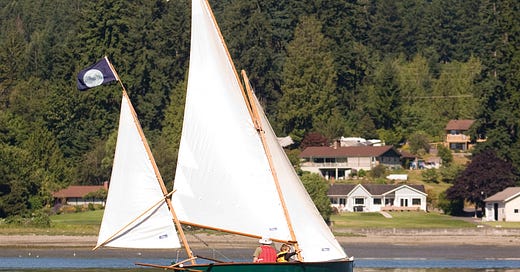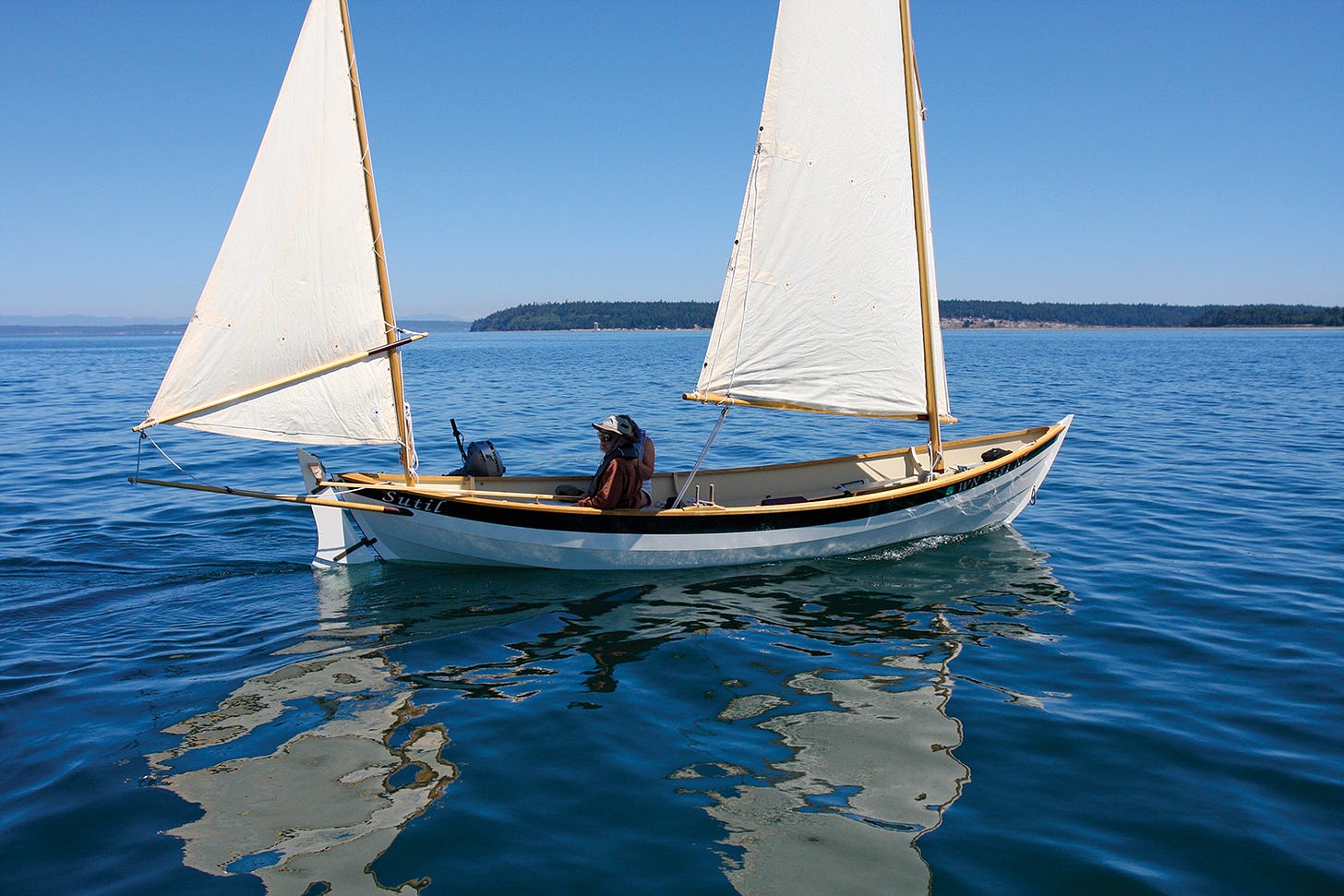Boat Review: Caledonia Yawl
Although updated for the contemporary sailor, the Caledonia’s still very visible lineage is part of her appeal.
Photo Debra Colvin
[Archival content]
Viking raids must have been shocking. Seemingly from nowhere a fleet of sleek, shallow-draft, square-sailed vessels would appear through the fog at dawn and run up to the beaches. Hordes of warriors hardened by weeks at the oars would swarm ashore wielding spears and battle axes and screaming like madmen.
The Vikings were able to penetrate virtually any waterway in Europe in their narrow ships, some with length-to-beam ratios greater than 6:1 and as many as 30 rowing stations. Doubled-ended, they could reverse direction without having to turn around. The versatile longships epitomized Scandinavian naval power and helped to make the Vikings a dominant force until the middle eleventh century.
Not until the 14th century were the low-freeboard vessels exposed as ineffective against newer, taller ships—the last Viking longship was defeated in 1429—but their influence on nautical design was profound and lasting.
Although the fearsome dragon head prows are a relic of the past, the basic longship design lives on. The Shetland yoal, a smaller, six-oared, lug-rigged double-ender used primarily for fishing was popular through the 19th century. Early yoals were actually imported from Norway in marked pieces like kit boats since the Scottish archipelago lacked the trees to produce them domestically.
It could be said traditional small-boat designer Iain Oughtred was standing on the shoulders of Norse giants when he drew his 19' 6" Caledonia Yawl—a boat he says was inspired by the yoal. With interests that include WWII airplane models, traditional music, and medieval calligraphy, Oughtred admits to being something of an anachronism. “Sure, I like things that are old. But only if they are good examples of their kind,” he says. “I’m content with the ancient technology, especially the simplicity, the toughness and durability, and the old-fashioned style.”
Although Oughtred’s Caledonia might look as if she sailed directly out of 19th century, she’s not actually a re-creation. Designed for the contemporary sailor, she’s lighter, more versatile, and almost certainly a better all-round performer than her ancestors. Having seen quite a few of them on the water lately, we asked Oughtred if the Caledonia was his best selling plan. “The most popular designs have always been the traditional lapstrake dinghy designs. But the more versatile double-enders have been consistently popular as well.” Oughtred notes that over the last couple of years the 18' 2" Arctic Tern, his personal favorite, has been the most popular, closely followed by the Caledonia. “The Caledonia Yawl seems to be especially appealing to sailors in the Pacific Northwest and in Maine.” Oughtred says. “I managed to sail three of them on a recent trip to the Northeast.”
He says it’s always interesting to see what builders have done with their boat to suit their particular purpose. “One has built-in buoyancy forward but not aft; I point out that this could be complicated if the boat is ever swamped or capsized. Some like steel centerplates for the effective ballast weight; I prefer a nicely shaped wood board and separate ballast if required. A compromise is the 1/2" steel plate with shaped wood sides in a standard-width case (trunk). Some like a simple fixed rudder; some need a lifting one. One added a jib to the lug-and-mizzen rig, which seems to work fine, as these boats seem to be very un-fussy about the CLR. Folding cuddies for a bit of shelter are very appealing; some sailmakers specialize in these. Some prospective builders are thinking of stretching the hull up to about two feet longer.”
Oughtred also notes the varying finish standards. “One was superbly built and finished to ‘yachty’ standard, which requires more care and attention. The others were bare basic workboat-finished boats, which suited their owners fine—they can heave aboard the barbecue and boxes of picnic or camping gear, make room for all their friends and the dog etc., and drive them up onto a gravelly beach. I like both!”
We were fortunate to meet and sail with Caledonia Yawl owner/builder Roger Coulter at Liberty Bay in Poulsbo, Washington.
PERFORMANCE:
“I also fly a small spinnaker downwind—a used Blue Jay spinnaker is just the right size and doesn’t require a pole. The shallow draft, small wetted surface, and canoe stern makes it very effective in light air. ” Roger Coulter, 2004 Spindrift
Keep reading with a 7-day free trial
Subscribe to Small Craft Advisor to keep reading this post and get 7 days of free access to the full post archives.




